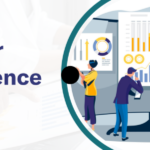Introduction
In the ever-changing landscape of the healthcare industry, health insurance payers are constantly seeking innovative ways to improve their services, reduce costs, and enhance the overall experience for their members. Data analytics has emerged as a powerful tool that can help payers achieve these objectives by unlocking valuable insights hidden within their vast troves of data. In this PayerDataInsights series, we’ll explore the various applications of data analytics in the health insurance payer industry, discuss the challenges and opportunities it presents, and share real-world success stories of how data-driven decision-making is transforming the sector.
The Power of Data Analytics in the Health Insurance Payer Industry
Data analytics plays a crucial role in empowering health insurance payers to make informed decisions that can lead to improved efficiency, cost savings, and better healthcare outcomes for their members. By identifying trends and patterns in healthcare utilization, claims processing, provider performance, and more, payers can develop targeted interventions, streamline operations, and offer personalized services that cater to the unique needs of their members.
Key Data Analytics Applications for Health Insurance Payers
Fraud Detection and Prevention
One of the most significant applications of data analytics in the health insurance payer industry is fraud detection and prevention. By analyzing claims data, payers can identify unusual patterns and anomalies that may indicate fraudulent activities, such as billing for non-existent services or duplicate claims. Early detection of fraud can help payers save millions of dollars and ensure that resources are allocated appropriately.
Provider Performance Evaluation and Network Optimization
Data analytics can also help payers assess the performance of healthcare providers within their networks. By analyzing metrics such as patient outcomes, readmission rates, and cost efficiency, payers can identify high-performing providers and develop strategies to optimize their networks, ultimately leading to better care for their members.
Population Health Management and Preventive Care
Using data analytics, health insurance payers can gain insights into the health trends and risks of their member populations. This information can be used to develop targeted preventive care programs, such as wellness initiatives or disease management interventions, which can help improve overall population health and reduce the burden of chronic conditions.
Claims Processing and Cost Containment
Efficient claims processing is critical for both payers and their members. Data analytics can help streamline this process by identifying bottlenecks, reducing errors, and automating certain tasks. Additionally, analyzing claims data can reveal areas of inefficiency, waste, and potential cost savings, enabling payers to take corrective action and contain costs.
Regulatory Compliance and Reporting
Health insurance payers face a complex web of regulations and reporting requirements. Data analytics can help ensure compliance by providing accurate, real-time data and insights to support regulatory submissions and audits.
Challenges and Opportunities in Implementing Data Analytics
While data analytics offers numerous benefits to health insurance payers, it also presents several challenges, including data quality and integration issues, privacy and security concerns, and building a data-driven culture within the organization. However, by leveraging advanced technologies such as artificial intelligence and machine learning, payers can overcome these challenges and unlock the full potential of their data.
Case Studies: Success Stories of Data Analytics in the Health Insurance Payer Industry
Throughout this PayerDataInsights series, we’ll share examples of health insurance payers that have successfully implemented data analytics initiatives, highlighting the lessons learned and best practices from these case studies.
Conclusion
The importance of data analytics in the health insurance payer industry cannot be overstated. As we continue to explore this topic in the PayerDataInsights series, we’ll delve deeper into specific aspects of data analytics, discuss emerging trends, and showcase how payers are leveraging data-driven insights to drive innovation and improvement.
Don’t miss out on our upcoming posts in the PayerDataInsights series! Subscribe to our blog today to receive the latest insights and updates straight to your inbox. We also invite you to share your experiences and insights on data analytics in the health insurance payer industry in the comments section below or on social media using the hashtag #PayerDataInsights.



